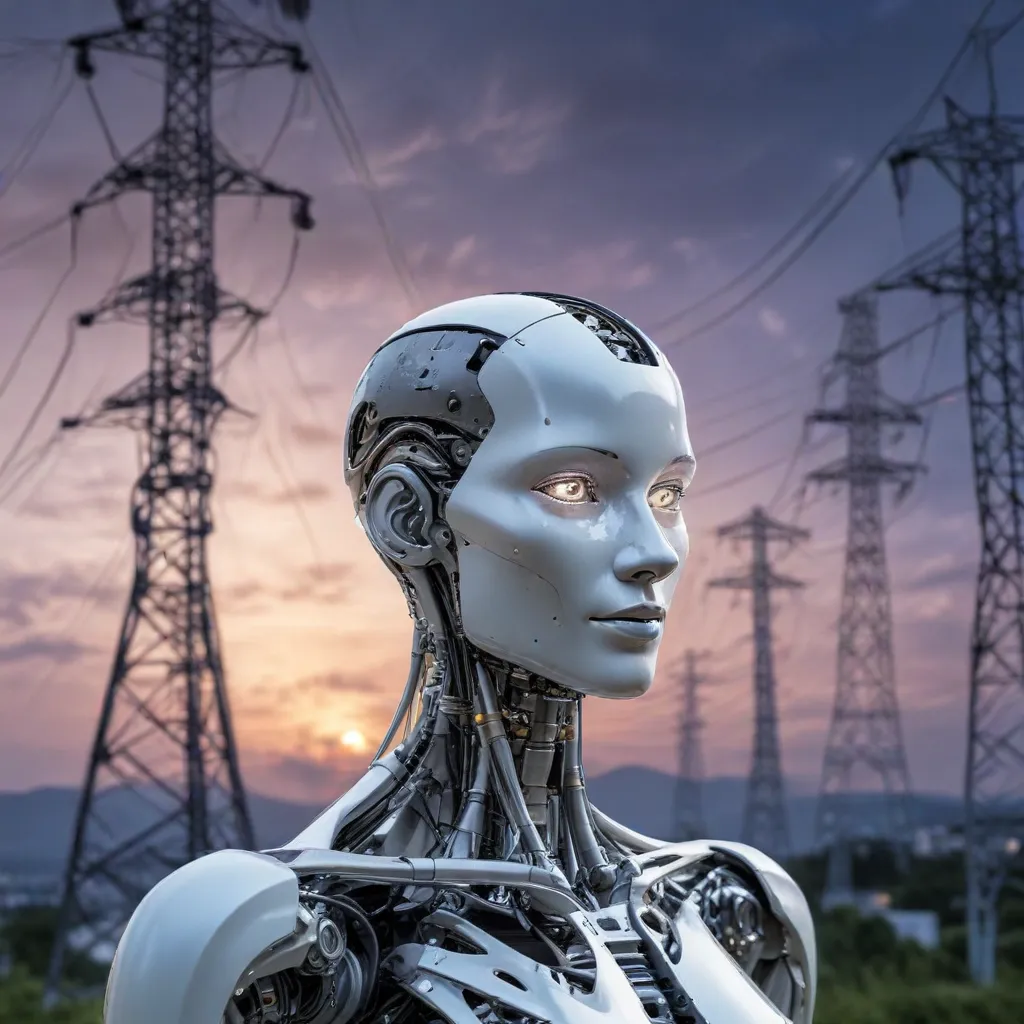
Leveraging Artificial Intelligence for Optimized Smart Grid Operations
The transition to a clean energy future is gaining momentum across Europe, driven by ambitious climate goals, technological breakthroughs, and innovative policy frameworks. As the region embraces a decentralized, renewable-powered grid, the role of Artificial Intelligence (AI) in optimizing smart grid operations has become increasingly vital.
Smart grids, which integrate digital technologies to enhance the efficiency, reliability, and resilience of power distribution, are at the forefront of this energy transformation. By leveraging AI-powered solutions, grid operators can unlock a new era of grid optimization, empowering consumers, integrating renewable energy sources, and ensuring a sustainable, reliable electricity supply.
AI-Powered Grid Optimization
At the heart of smart grid operations lies the need for predictive, data-driven decision-making. AI and machine learning (ML) algorithms can analyze vast amounts of data from advanced metering infrastructure, phasor measurement units, and other grid sensors to uncover valuable insights. These insights can then be leveraged to optimize grid performance across multiple dimensions.
Predictive maintenance is one such area where AI is making a significant impact. By monitoring the health of grid assets in real-time, AI-powered systems can identify potential failures before they occur, allowing grid operators to schedule proactive maintenance and minimize unplanned downtime. This not only enhances grid reliability but also reduces operational costs and extends the lifespan of critical infrastructure.
Another crucial application of AI in smart grids is dynamic demand response modeling. By leveraging AI algorithms to forecast energy demand and identify patterns in consumer behavior, grid operators can implement more effective demand response programs. These programs incentivize consumers to adjust their energy consumption during peak periods, reducing strain on the grid and enabling better integration of renewable energy sources.
Furthermore, AI can play a pivotal role in optimal grid configuration. By analyzing grid topology, load profiles, and renewable energy generation, AI-driven systems can identify the most efficient way to configure the grid, optimizing power flow, minimizing losses, and ensuring grid stability. This dynamic, data-driven approach to grid management can unlock significant improvements in energy efficiency and cost-effectiveness.
AI-Driven Grid Resilience
As extreme weather events and cyber threats continue to challenge the reliability of power systems, the role of AI in enhancing grid resilience is becoming increasingly vital. AI-powered solutions can significantly improve the way grid operators manage and respond to disruptions.
Improved outage management is a prime example of AI’s impact on grid resilience. AI-enabled fault detection and localization algorithms can rapidly pinpoint the origin of grid disturbances, while automated restoration procedures can expedite the recovery process. Real-time grid monitoring, facilitated by AI-driven analytics, provides grid operators with a comprehensive understanding of system dynamics, enabling them to respond swiftly and effectively to mitigate the impact of outages.
Cybersecurity is another critical aspect of grid resilience, and AI is playing a crucial role in this domain. Advanced threat detection algorithms can identify and mitigate cyber threats in real-time, while autonomous attack mitigation systems can take immediate action to isolate and contain the impact of cyberattacks. Additionally, AI-powered proactive vulnerability assessments can help grid operators stay one step ahead of evolving security challenges.
AI-Enabled Grid Flexibility
As the European energy landscape transitions towards increased renewable energy integration, the flexibility of the grid becomes paramount. AI-powered solutions are at the forefront of unlocking the full potential of renewable resources, ensuring seamless integration and optimal grid performance.
Intermittency forecasting is a critical challenge in renewable energy integration, as the variable nature of wind and solar generation can introduce instability into the grid. AI-driven forecasting models can accurately predict fluctuations in renewable energy output, enabling grid operators to adjust generation schedules and storage strategies accordingly, thereby enhancing the reliability of the power supply.
Complementing these forecasting capabilities, AI-powered adaptive generation scheduling algorithms can dynamically optimize the dispatch of conventional and renewable energy sources, ensuring an optimal balance between supply and demand. This dynamic optimization, coupled with the integration of grid-scale energy storage systems, reinforces the flexibility and resilience of the grid.
Another transformative application of AI in smart grids is distributed energy resource (DER) management. AI-driven peer-to-peer energy trading platforms and virtual power plant coordination algorithms can unlock the full potential of distributed energy resources, such as rooftop solar, energy storage, and demand-side management. By orchestrating these decentralized assets, AI can enable more efficient energy use, empower consumers, and support the transition towards a decarbonized, decentralized, and democratized energy landscape.
Data-Driven Grid Modernization
Underpinning the entire smart grid ecosystem is the proliferation of advanced metering infrastructure (AMI) and distributed sensor networks. These technologies, coupled with AI-powered analytics, are revolutionizing the way grid operators understand and manage energy consumption patterns.
Granular, real-time consumption data from smart meters and other grid-edge devices enables load profiling and forecasting, allowing grid operators to anticipate and accommodate changing demand patterns. This, in turn, facilitates more effective demand-side management strategies and the integration of renewable energy sources.
Furthermore, AI-driven multi-objective optimization algorithms can help grid operators navigate the complex trade-offs between grid efficiency, reliability, and sustainability. These data-driven decision support systems, combined with scenario-based planning and simulation-driven insights, empower grid operators to make informed, strategic decisions that align with the European Union’s ambitious climate goals and energy transition priorities.
The integration of AI into smart grid operations is not just a technological advancement; it is a transformative shift in the way we conceptualize and manage our energy systems. By harnessing the power of AI, European grid operators can enhance grid resilience, optimize renewable energy integration, empower consumers, and accelerate the transition towards a sustainable, decarbonized energy future. As the European Future Energy Forum continues to drive this revolution, the role of AI in smart grid operations will undoubtedly become increasingly indispensable.







